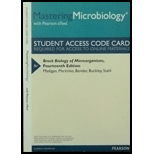
Photosynthesis is the process which is used by plants and other organisms to convert light energy into chemical energy. It can later be released to fuel the activities of organisms. Photosynthetic organisms that can able to synthesize food directly from water and carbon dioxide by using energy from light is called as phototrophs.
Explanation of Solution
All organisms are cannot use carbon dioxide as a source of carbon atoms to carry out the photosynthesis. An organism which use organic compounds rather than carbon dioxide is called as photoheterotrophs. Photosynthesis that release oxygen in plants, cyanobacteria, and plants is called as oxygenic photosynthesis. On the other hand, there are many phototrophic bacteria in which water is not oxidized and generation of oxygen is absent. This process is termed as anoxygenic photosynthesis.
Major difference between anoxygenic and oxygenic phototrophs lie in their electron donors and reaction center photosystem (RC) that used for photosynthesis. Oxygenic phototrophs use water as an electron donor. Therefore, it releases oxygen as a byproduct of photosynthesis. Photosystem I and II normally function in oxygenic photosynthesis. Photosystem I for reducing power and Photosystem II for ATP synthesis.
Anoxygenic phototrophs use electron donors other than water. Example, sulfide and other reduced substance from their environment. Anoxygenic photosystem contain a single photosystem for ATP generation and reducing power. Anoxygenic photrophs carry out photosynthetic light reaction in which electron travel by electron carrier series that arranged in a photosynthetic membrane. The ATP drives from production of proton motive force. Other than this, the anoxygenic phototrophs contain bacteriochlorophyll and oxygenic phototrophs consists of chlorophyll.
Want to see more full solutions like this?
Chapter 13 Solutions
Brock Biology of Microorgan. -Access
 Human Anatomy & Physiology (11th Edition)BiologyISBN:9780134580999Author:Elaine N. Marieb, Katja N. HoehnPublisher:PEARSON
Human Anatomy & Physiology (11th Edition)BiologyISBN:9780134580999Author:Elaine N. Marieb, Katja N. HoehnPublisher:PEARSON Biology 2eBiologyISBN:9781947172517Author:Matthew Douglas, Jung Choi, Mary Ann ClarkPublisher:OpenStax
Biology 2eBiologyISBN:9781947172517Author:Matthew Douglas, Jung Choi, Mary Ann ClarkPublisher:OpenStax Anatomy & PhysiologyBiologyISBN:9781259398629Author:McKinley, Michael P., O'loughlin, Valerie Dean, Bidle, Theresa StouterPublisher:Mcgraw Hill Education,
Anatomy & PhysiologyBiologyISBN:9781259398629Author:McKinley, Michael P., O'loughlin, Valerie Dean, Bidle, Theresa StouterPublisher:Mcgraw Hill Education, Molecular Biology of the Cell (Sixth Edition)BiologyISBN:9780815344322Author:Bruce Alberts, Alexander D. Johnson, Julian Lewis, David Morgan, Martin Raff, Keith Roberts, Peter WalterPublisher:W. W. Norton & Company
Molecular Biology of the Cell (Sixth Edition)BiologyISBN:9780815344322Author:Bruce Alberts, Alexander D. Johnson, Julian Lewis, David Morgan, Martin Raff, Keith Roberts, Peter WalterPublisher:W. W. Norton & Company Laboratory Manual For Human Anatomy & PhysiologyBiologyISBN:9781260159363Author:Martin, Terry R., Prentice-craver, CynthiaPublisher:McGraw-Hill Publishing Co.
Laboratory Manual For Human Anatomy & PhysiologyBiologyISBN:9781260159363Author:Martin, Terry R., Prentice-craver, CynthiaPublisher:McGraw-Hill Publishing Co. Inquiry Into Life (16th Edition)BiologyISBN:9781260231700Author:Sylvia S. Mader, Michael WindelspechtPublisher:McGraw Hill Education
Inquiry Into Life (16th Edition)BiologyISBN:9781260231700Author:Sylvia S. Mader, Michael WindelspechtPublisher:McGraw Hill Education





